Making 'PPE' at home: Families use 3D printers to address coronavirus shortages
From Louisiana to Montana, families are using 3D printers to make face shields.
In basements and garages across America, a cottage industry of 3D printing is gaining steam to fight the novel coronavirus.
Entire families, from Louisiana to Montana, are forming in-home production lines for personal protective equipment for hospital workers and public safety officers that’s been in short supply during the coronavirus pandemic.
WATCH: An inside look at the 3D printing movement to confront shortages during COVID tonight
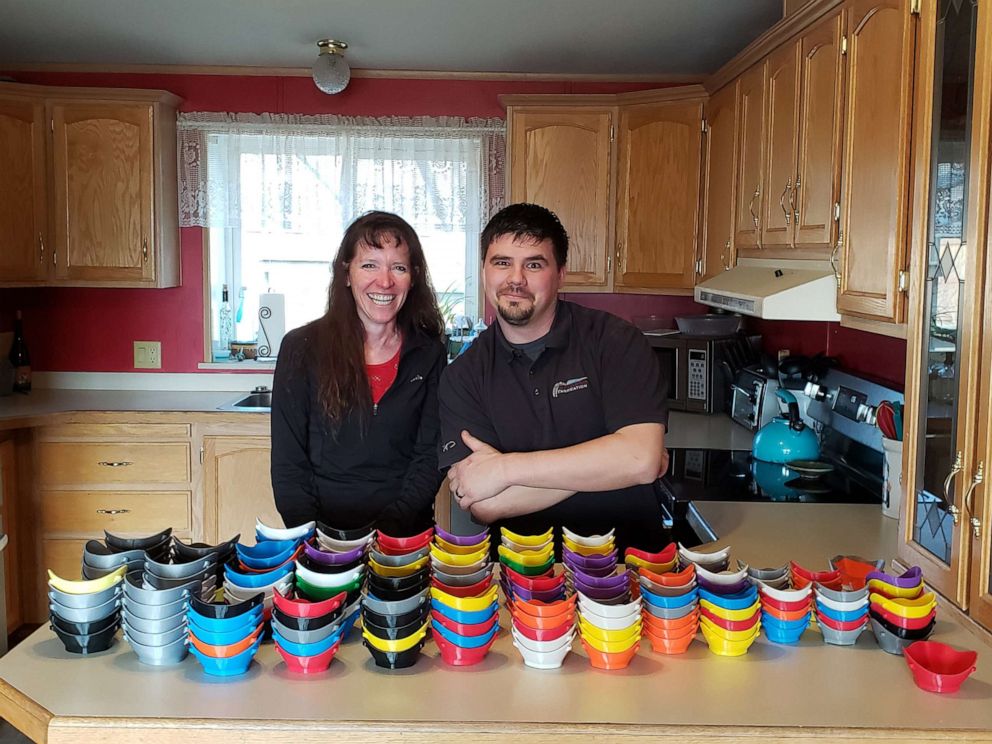
"I thought, 'how can I help?' Other people are doing their part and it's time to do mine," said 13-year-old Henry Robin of Baton Rouge, Louisiana, who’s making face mask extenders for medical workers with a 3D printer he got for his birthday.
ABC News got an inside look at homegrown operations in six states, where teachers, students, designers, artists and retired engineers are banding together to manufacture and distribute plastic masks and face shields to those who are on the front lines of the pandemic.
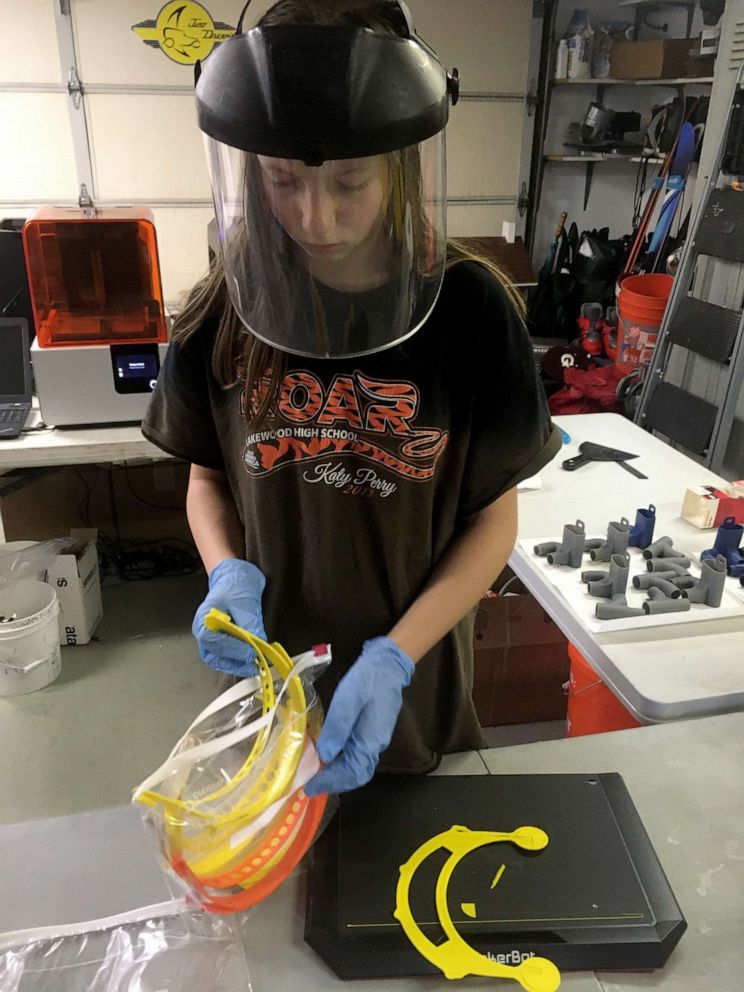
Colorado 7th grader Amelia Brown and her father Matt, a STEM teacher at Warren Tech/Lakewood High School, have printed more than 300 headbands for face shields in the family garage, one per hour from each printer, around the clock.
In Maryland, Todd Blatt, who owns Custom 3D Stuff, a small art business, has converted his Baltimore studio into a face shield factory that's churned out more than 1,200 so far.
Blatt said his team is even fielding orders for 3D-printed shields from the Navajo Nation.
"We’re shipping out five hundred face shields today to Arizona," he said.
The printers, which are fixtures in many American classrooms, science labs, art studios and libraries, melt filament to create a pre-programmed design on a heated surface. Many makers are using donated raw materials and giving away the prints free of charge. Others, like Blatt, are selling at cost, about $1 a piece.
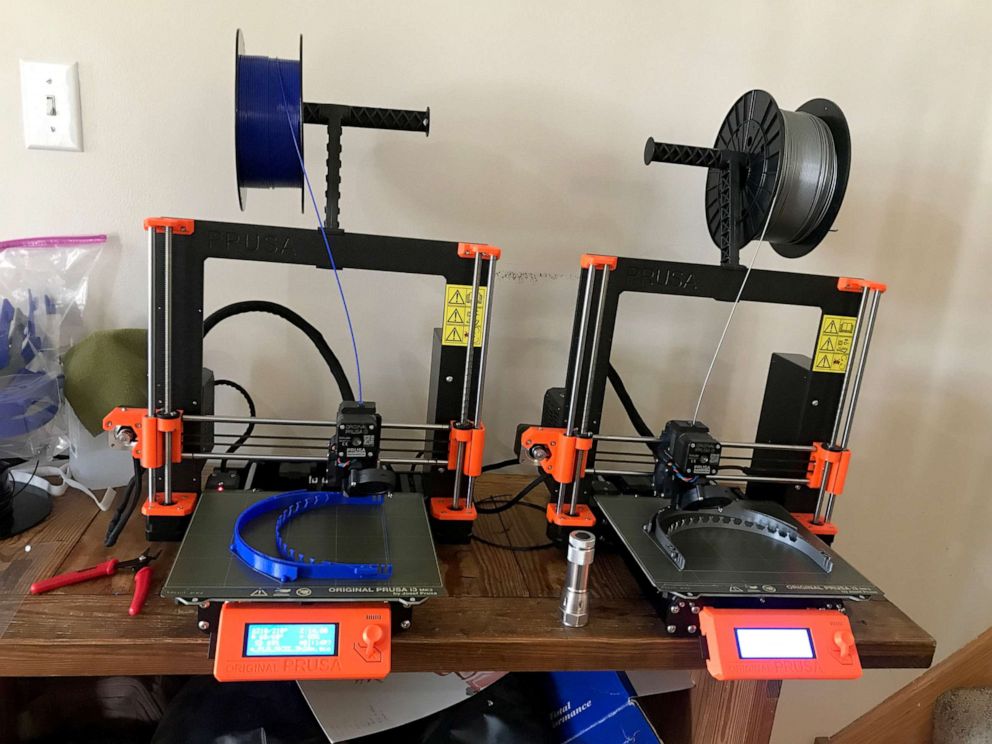
Retired Air Force engineer John Grant, who’s working with Blatt at the Baltimore Node workspace, designed his own version of the face shield, attaching overhead projector sheets from school classrooms to 3D-printed headbands.
"Just remember, the experiment can always be solved with the materials in the room," Grant said, recalling advice from a college professor on problem solving. "And anytime I’ve come up with a problem that seems unsolvable, I’ll say that to myself and somehow find a way to get it done."
Tune into ABC at 1 p.m. ET and ABC News Live at 4 p.m. ET every weekday for special coverage of the novel coronavirus with the full ABC News team, including the latest news, context and analysis.
The movement highlights an unflinching American spirit of ingenuity and generosity, even in the face of a pandemic.
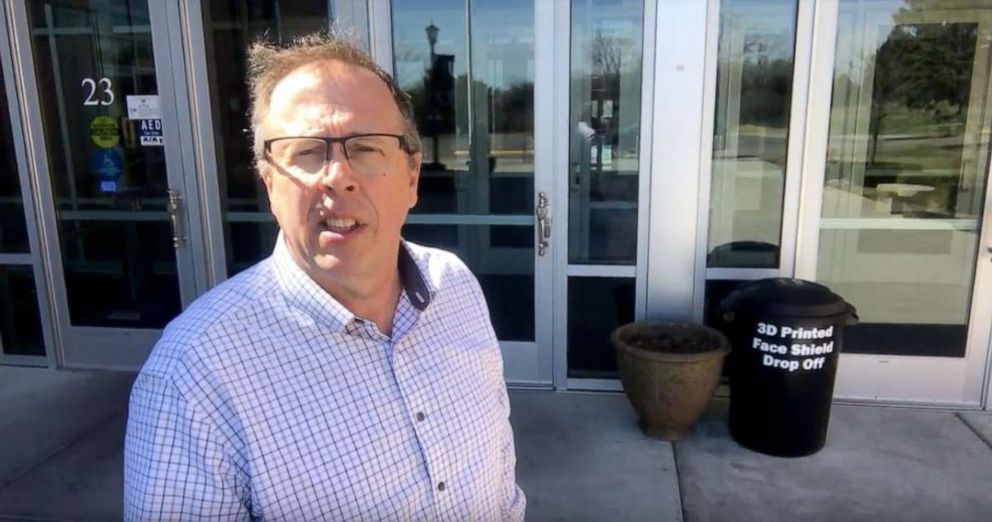
Minnesota science teacher Mark Westlake has collected more than 700 face shields so far from dozens of volunteer 3D printers across the Twin Cities.
His innovation center at St. Thomas Academy, a private Catholic high school near St. Paul, is now a community distribution hub for local law enforcement agencies and hospitals.
"Over and over and over again we hear (from doctors and nurses), 'we’ve had to use the same 3D printed shield or the same visor for days, and they’re cracked, and they get foggy, and they can’t be cleaned anymore,'" Westlake said. "That's the way the PPE situation is right now, and it's a little scary."
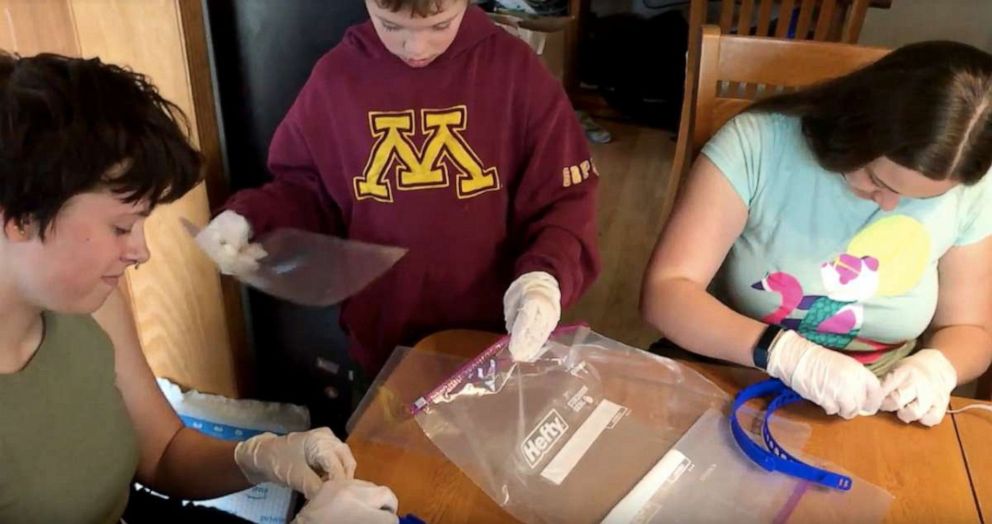
The Food and Drug Administration, which regulates medical equipment, has acknowledged that 3D printing may be useful to address shortages in emergency situations, but warns in recently released guidance that homemade protective gear is "unlikely to provide the same fluid barrier and air filtration protection" as certified equipment.
"Eventually, companies that make this professionally in batches of 10,000 at a time are going to fill that gap," noted Westlake. "We're just trying to fill a small gap."
The shortages of protective equipment are even felt in rural America. Montana high school science teachers Buffy Smith and Jake Spearson have been getting orders for their 3D-printed face masks nonstop in Helena.
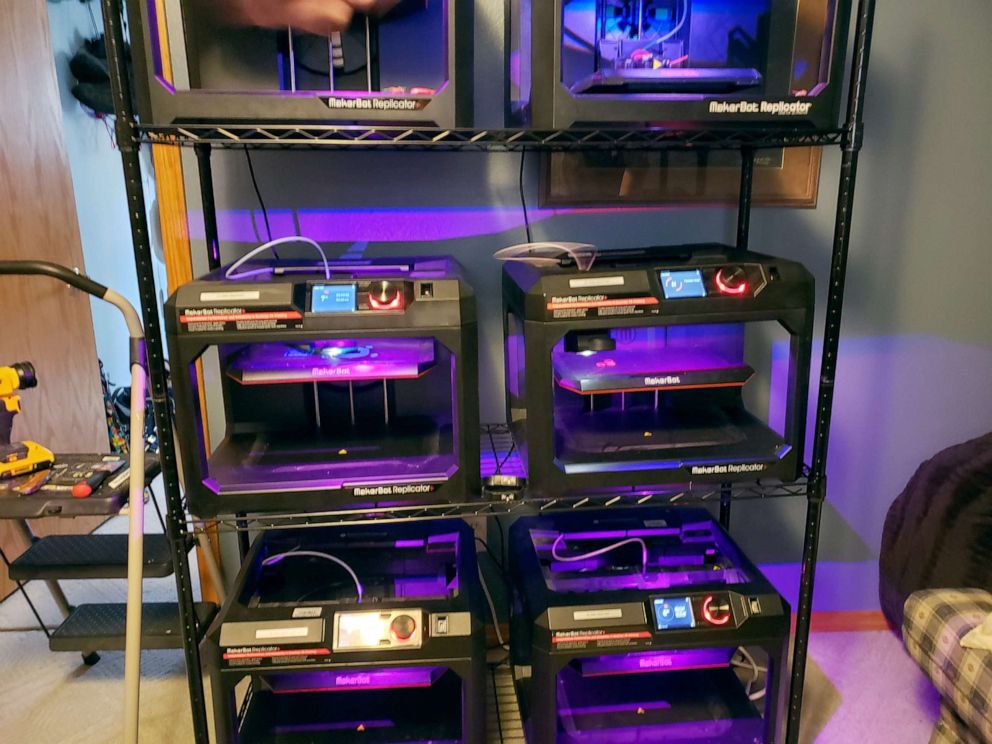
"Montana Department of Corrections ordered 200 of them. Montana Eye Care ordered 100 of them. And then, interestingly enough, we made some that were going to West Virginia to a doctor there," Smith said. "That's kind of how Montana works, you know. Somebody who knows somebody."
Smith has half a dozen printers stacked on top of each other, running 24/7 beside the drum set and sofa in her son’s music room.
In Colorado, more than 1,500 community volunteers have launched a coordinated "Make4Covid" initiative that has even begun air delivery of 3D-printed PPE to rural hospitals.
"We have makers, designers, policy experts, health care workers collaborating in a succinct way to get PPE into the hands of frontline health care workers in Colorado," said Merhia Wiese, who’s helping to organize the flights.
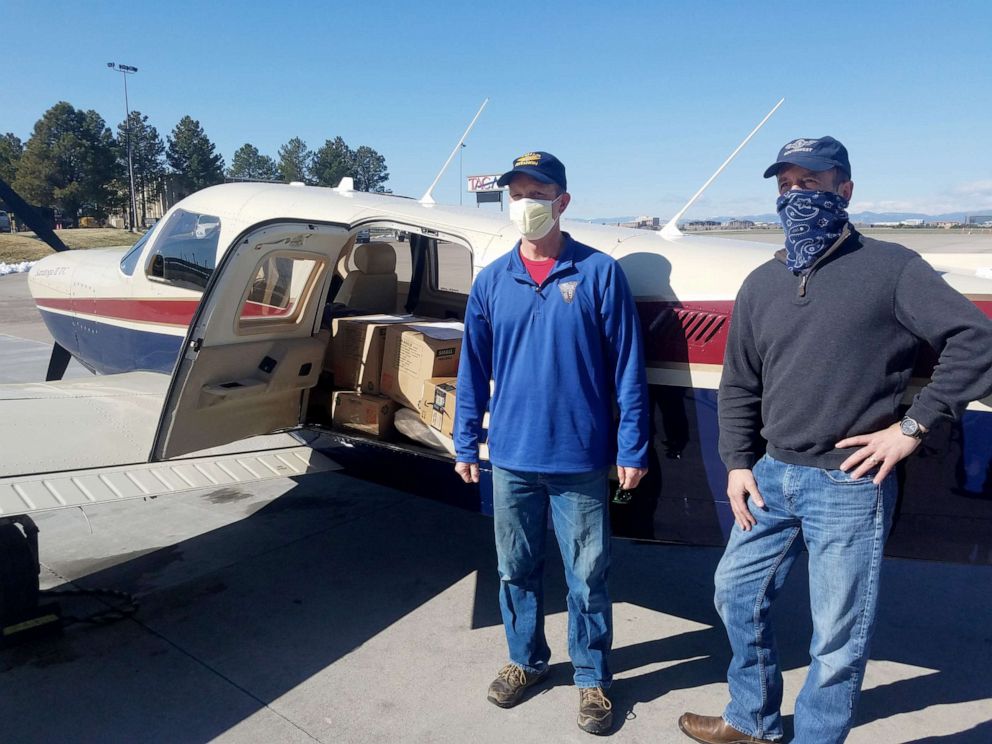
Volunteer pilot Erick Ecklund, on leave from United Airlines, last week captained a donated plane from nonprofit Angel Flights West loaded with 50 pounds of homemade face masks and face shields for a hospital in remote Holyoke, Colorado, that just got its first COVID-19 patient.
"We really started to realize that those full face shields were very, very important, and in fact I was pretty worried because we were counting on them to say, ‘do we have enough to get through a shift or two?’" said Cathy Harshbarger, CEO of Melissa Memorial Hospital in Holyoke.
"Boy were we blessed when somebody said, 'hey, we've got the solution for you, we'll bring them to you,'" she said of the delivery.
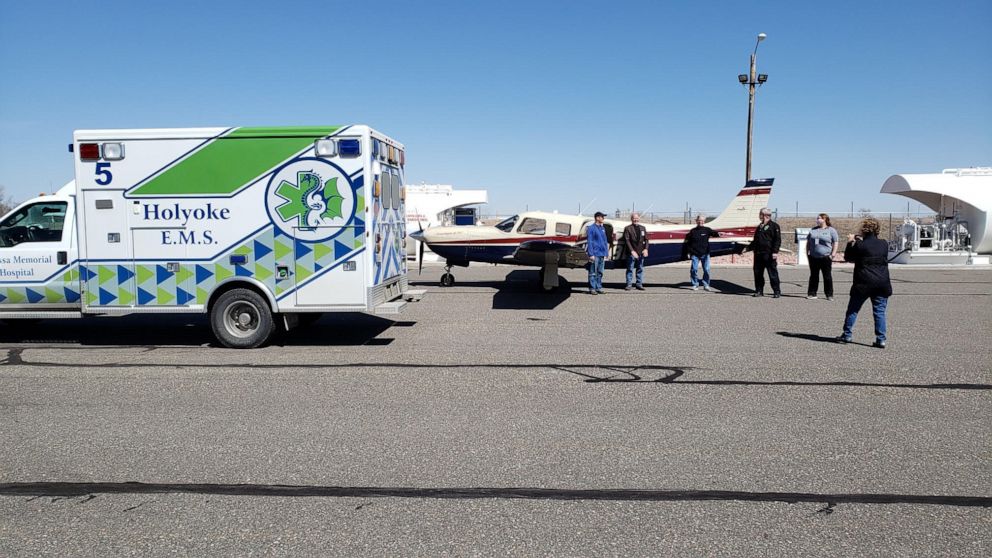
"There's always something that everybody can do. Even if you don't have a 3D printer, you can you can help somehow," said Matt Brown, whose 3D-printed face shield headbands are part of that effort.
As the surge of novel coronavirus cases continues, and many families stay hunkered down at home, so many are determined to help fill the gap for PPE, one 3D printer at a time.
"I'm also going to send these to Indiana and Texas. Just all over the country, and just get them out there to where everybody can be comfortable," Henry Robin told ABC affiliate WBRZ in Louisiana.
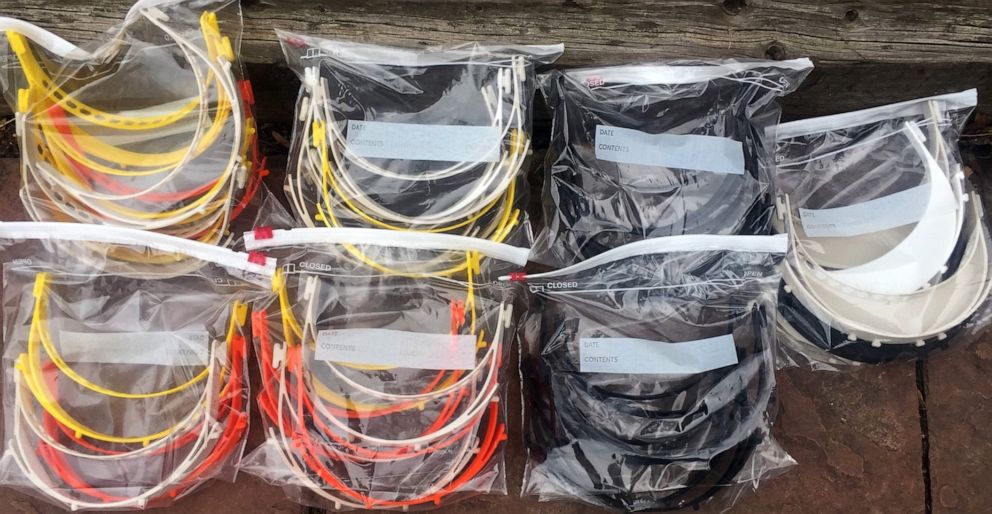
What to know about coronavirus:
- How it started and how to protect yourself: coronavirus explained
- What to do if you have symptoms: coronavirus symptoms
- Tracking the spread in the US and Worldwide: coronavirus map




